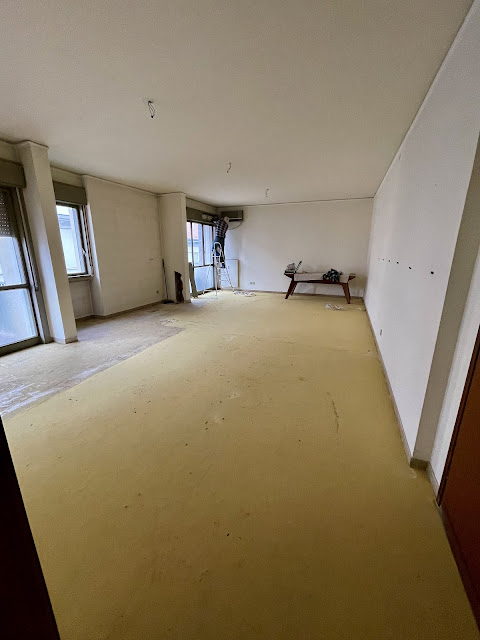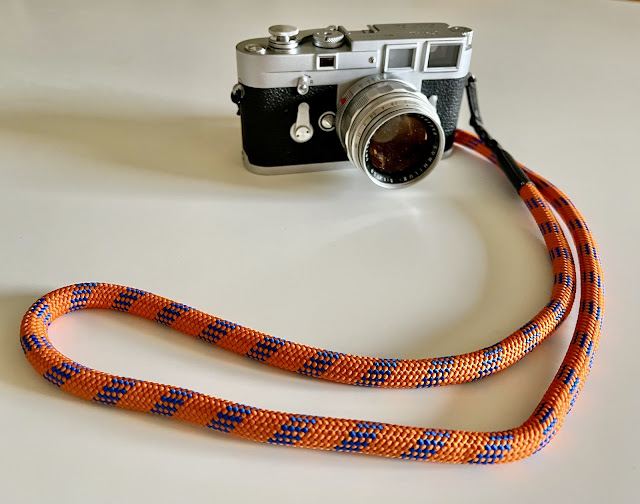Tuesday, December 31, 2024
Monday, December 30, 2024
Sunday, December 29, 2024
Barre Philips passed away today 🌸
A giant of double-bass and improvised music…had the chance to meet and listen to him alive in Padua, in 2019.
R.I.P. 💫
Friday, December 27, 2024
Wednesday, December 25, 2024
Tuesday, December 24, 2024
Monday, December 23, 2024
Friday, December 20, 2024
Leica M3, Super Angulon 21 mm 3,4 & Summilux 35 mm 1,4 💫
Alan Parsons - from the knobs to the stardom 💫
Alan Parsons was born on December 20, 1948. During school he studied piano and flute, and as a boy he began playing in various bands, both as a bass player and as a guitarist.
Passionate about electronics, after finishing school Alan found work at a branch of EMI. A big fan of the Beatles, eager to realize his dream of meeting them, and above all to understand how it was possible to make an album like "Sgt. Pepper's", he decided to try to get a job at the prestigious "Abbey Road Studios". No sooner said than done: after submitting the application, within ten days he obtained an unexpected transfer right there. At Abbey Road he began to learn all the secrets of a recording studio, starting to meet different artists belonging to various musical genres.
One day he was sent to "Apple Studios" for a repair, and arrived there just when the Beatles were recording the album "Let It Be". He thought he had reached the pinnacle of his expectations, but he still didn't know that shortly after his involvement with them would increase significantly, starting a fruitful collaboration, both with the band and with Paul and George in their solo careers. In the following years he began to work with an incredible number of artists, not only as a tape operator, technician, or sound engineer, but also as a musician. Now in the loop and having begun to demonstrate his high qualities as a sound engineer,
Alan soon got a job for the band that would consecrate him for the first time as a sound engineer: Pink Floyd. After being an assistant for some sessions of "Ummagumma" (1969) and having mixed the album "Atom Heart Mother" (1970), he was called back in 1973 as chief engineer for an album that would enter the history of music: "The Dark Side Of The Moon". The success of the album was amazing, and Alan also obtained a nomination for a Grammy Award as best sound engineer. At this point Parsons begins to receive offers not only as an engineer, but also as a producer. He is now an important name. In 1974 he meets Eric Woolfson, a Scottish musician, composer and producer, who becomes his manager.
The two decide together to create an "anomalous" musical group, with the orchestra always present (conducted by Andrew Powell) and with the other musicians and singers as session-men. 1975 is a fundamental year for Alan, because the "Alan Parsons project" is born. And the rest is history.
Thursday, December 19, 2024
Wednesday, December 18, 2024
Frippertronics
Frippertronics performance at Peaches record store in St Louis, July 19 1979.
Twin A-700 Revoxes on stage ready for perfomance to about 40 journalists, radio people and record shop personnel at the Kammertheater, Zürich, May 29, 1979
Tuesday, December 17, 2024
A 🎁 for MZ?
A lot of nipples and pubic hairs and penises en-plein-air… cannot but thinking if Mr. MZ - always “interested” about human body and its parts - already bought it.
😏
A truly well-informed essay about the beauty of nudity and nudism with many vintage pictures.
The beauty of shameless beauty 💎
(I bought my copy, godforgiveme ✅)
Monday, December 16, 2024
A Christmas present from ECM
|
|
Saturday, December 14, 2024
Tools of the trade - the Stringbenders
Original B-Bender Guitar....
The B-Bender was invented in 1968 by musicians Gene Parsons and Clarence White of Nashville West and The Byrds. The device was originally called the Parsons/White Pull-String, later renamed the StringBender, and is now best known as the B-Bender. Early prototypes developed by Parsons (a machinist as well as a drummer) included multiple bending devices for the E, B, G and D strings, but guitarist White decided he preferred a single B string bender in the final design. The B string is bent up a full tone by pulling the guitar neck down. This puts pressure on the strap, which is attached to a spring-loaded lever at the base of the neck. The lever arm passes through the body of the guitar and is connected to the B string behind the bridge
White's 1956 Telecaster with the original Pull-String is now owned and regularly played by Marty Stuart, who bought it from White's widow.
Another early maker and user of the Pull-String was Bob Warford, a friend and Kentucky Colonels bandmate of White's who also played guitar with Linda Ronstadt and The Everly Brothers. Warford made his own Pull-String in early 1968 based on the Parsons/White design, with their consent, and installed it in his Telecaster. Later that year, Parsons and White licensed the StringBender to Leo Fender at Fender Musical Instruments Corporation. Fender revised the design to simplify mass production and developed a prototype. However, this model never went into production. Parsons and White subsequently licensed their design to Dave Evans, who had heard about the device and had been experimenting with his own models. Evans built and sold a version of the Pull-String from 1969 to 1973. His customers included Albert Lee, John Beland (guitarist for Linda Ronstadt) and Eagles guitarist Bernie Leadon, who played his Evans Pull-String on "Peaceful Easy Feeling".
In 1973 Parsons started making and installing the Pull-String himself, and renamed it the StringBender. He eventually made as many as 2,000 custom installations for guitarists including Ronnie Wood of The Rolling Stones. Harold Matlin of Matlin Guitars built one for Jimmy Page of Led Zeppelin. Parsons also supplied several hundred StringBender kits to Japanese guitar manufacturer Tokai Gakki. In 1989, when demand overtook his production capacity, Parsons partnered with Meridian Green to outsource the production of the kits, develop a network of authorized installation shops and write an instruction manual for the installers. Green also approached Fender again, and the Fender Custom Shop began producing a Clarence White signature model custom Telecaster equipped with the Parsons/White StringBender. Around 200 were produced, and based on this success, Fender decided to mass-produce a similar model and call it the B-Bender. Parsons and Green revised the design again, and in 1996 Fender began production of the Nashville B-Bender Telecaster incorporating the Parsons/Green StringBender.
Shortly after Clarence White was killed by a drunk driver while loading equipment into his van with his brother Roland after a gig, Richard Bowden, former Linda Ronstadt and Dan Folgelberg guitarist, joined Roger McGuinn's post-Byrds organization and Bowden created his own B-Bender. Being a Gibson player and with String Benders only available for Telecasters, Bowden created a non-defacing palm pedal that attached to the standard Gibson-style stop-bar tail piece. He leased his patent to Gibson, who turned it over to Epiphone for production. Due to manufacturing flaws, Epiphone discontinued production when their patent lease expired after ten years. Bowden now manufactures his device in his own custom shop and has expanded his designs to also fit on Telecasters, G&L ASAT Tribute Specials, and Stratocasters, as well as many acoustic guitars.
The Pretentious Çunt 😉😏😉
Do you want to raise next generation of audiophiles? Ask Santa for this life-changer gift for your kids ✅
😏
Friday, December 13, 2024
Thursday, December 12, 2024
Wednesday, December 11, 2024
HCB and MF 💫
In 1971, Josef Koudelka captured a compelling photograph of Henri Cartier-Bresson and Martine Franck, two towering figures in the world of photography. By this time, Cartier-Bresson had already established himself as a pioneer of photojournalism and a co-founder of the esteemed Magnum Photos agency in 1947. Known for his mastery of the "decisive moment," Cartier-Bresson’s work redefined visual storytelling, blending art and reportage with remarkable precision. His influence on 20th-century photography was unparalleled, shaping the medium through his candid and spontaneous approach to capturing life.
Martine Franck, who later became Cartier-Bresson’s wife in 1970, was an accomplished photographer in her own right. Joining Magnum Photos in 1980, Franck built a legacy of intimate and insightful portraits, often focusing on marginalized communities and cultural heritage. Her unique perspective and dedication to her craft complemented Cartier-Bresson’s vision, making them a dynamic pair in the photography world. By 1971, Franck was gaining recognition for her sensitive and artistic compositions, distinguishing her as a significant voice in contemporary photography.
Josef Koudelka, the man behind this iconic photograph, was also a member of Magnum Photos, known for his striking black-and-white images of Roma communities and his documentation of the Prague Spring in 1968. This image serves as a historical convergence of three legendary photographers, capturing a moment of camaraderie and mutual respect within the creative sphere. The 1970s were a transformative era for Magnum Photos, as the agency continued to document pivotal events and timeless human experiences. This photograph remains a powerful testament to the enduring legacy of these visionaries in shaping the art and history of photography.
Bernie Grundman on duty 💫💎💫
Three recent shots of the mastering maestro in his studio.
Heartwarming seeing a Studer A-80 with preview heads (and tape on it) on a picture 💫













































































.jpg)


.jpg)













































